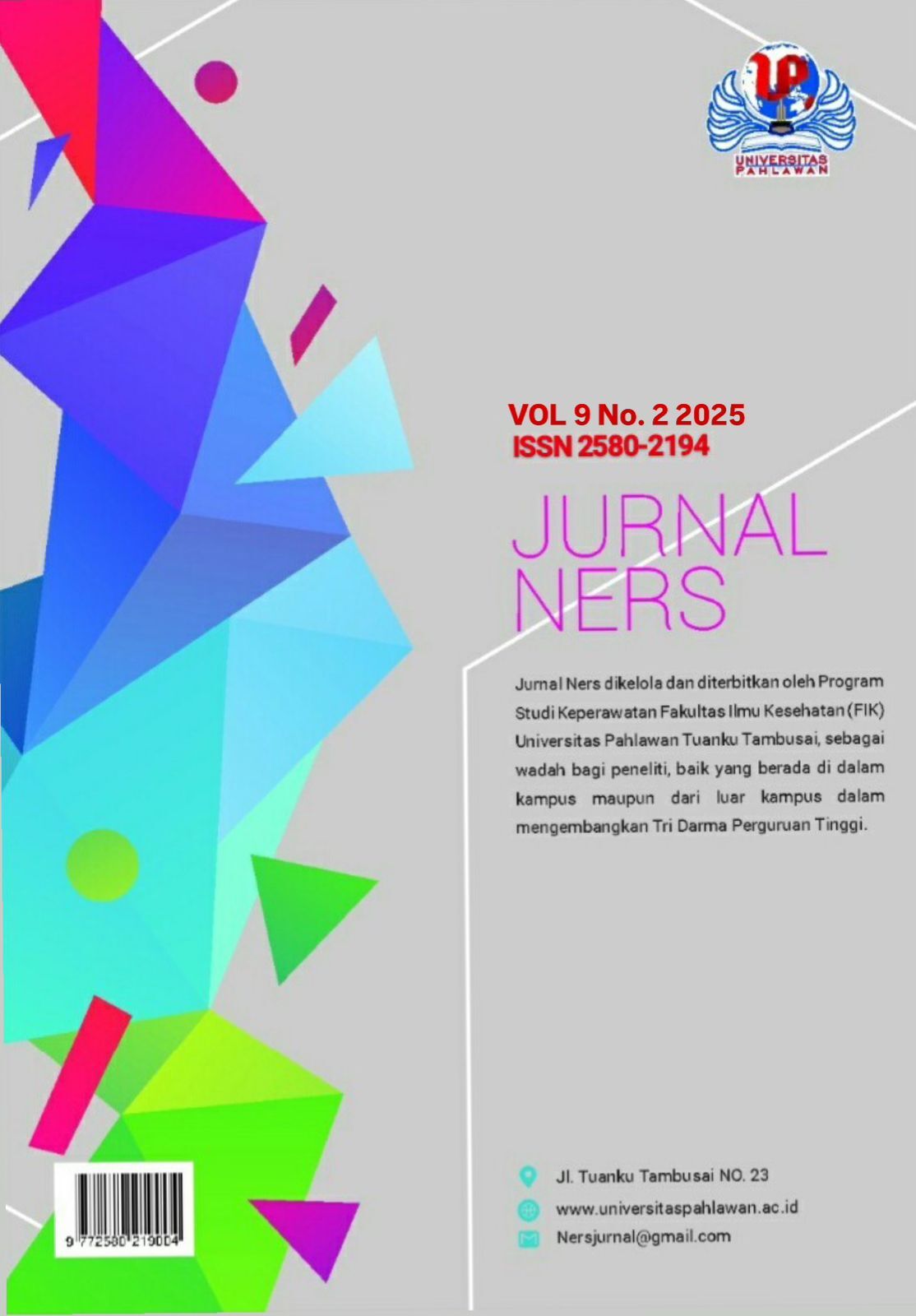Efektivitas Metode Sitz Bath Terhadap Intensitas Nyeri Luka Perineum Pada Ibu Postpartum di TPMB Mei Puji Lestari, Amd.Keb
DOI:
https://doi.org/10.31004/jn.v9i2.42351Abstract
90% of mothers experiencing perineal tears either spontaneously or due to episiotomy. Tearing in the perineum will cause pain which ultimately causes discomfort for the postpartum mother. One non-pharmacological method, namely hydrotherapy with a sitz bath, is a method used to reduce postpartum pain.To determine the effectiveness of the method Seat Bath on the intensity of perineal wound pain in postpartum mothers at TPMB May Puji Lestari, Amd.Keb in 2024.Use quasi experiment and approach one group pre-post test design. The research population was 60 mothers giving birth. The research sample used the Slovin formula which obtained a sample size of 38 respondents. Bivariate analysis uses tests Wilcoxcon. The research instrument used a questionnaire sheet and research observation sheet.Test results Wilcoxone Signed Test The obtained p value = 0.000 <0.05 so it can be concluded that there is an influence on the effectiveness of the method seat bath on the intensity of perineal wound pain in postpartum mothers at TPMB Mei Puji Lestari, Amd.Keb.There is an influence on the effectiveness of the method Seat Bath Regarding the Intensity of Perineal Wound Pain in Postpartum Mothers at TPMB May Puji Lestari, Amd.Keb 2024. This research can be used as reading material as a source of knowledge for the community and as a reference for the community in applying the sitz bath method as an effort to relieve post Sectio Caesarea pain in oneself , family or relatives.Downloads
Published
2025-02-17
How to Cite
Mustafa, A. R., & Robaini, R. (2025). Efektivitas Metode Sitz Bath Terhadap Intensitas Nyeri Luka Perineum Pada Ibu Postpartum di TPMB Mei Puji Lestari, Amd.Keb. Jurnal Ners, 9(2), 1759–1768. https://doi.org/10.31004/jn.v9i2.42351
Issue
Section
Articles
License

This work is licensed under a Creative Commons Attribution-ShareAlike 4.0 International License.
Authors who publish with this journal agree to the following terms: Authors retain copyright and grant the journal right of first publication with the work simultaneously licensed under a Creative Commons Attribution-ShareAlike 4.0 International License that allows others to share the work with an acknowledgement of the works authorship and initial publication in this journal. Authors are able to enter into separate, additional contractual arrangements for the non-exclusive distribution of the journals published version of the work (e.g., post it to an institutional repository or publish it in a book), with an acknowledgement of its initial publication in this journal. Authors are permitted and encouraged to post their work online (e.g., in institutional repositories or on their website) prior to and during the submission process, as it can lead to productive exchanges, as well as earlier and greater citation of published work (See The Effect of Open Access).








